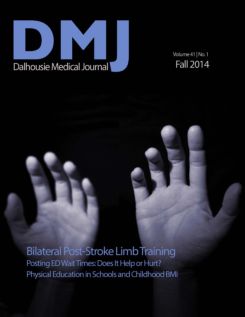A case of myoclonus-dystonia diagnosed as Tourette Syndrome
DOI:
https://doi.org/10.15273/dmj.Vol41No1.5940Abstract
Myoclonus dystonia (M-D) is a rare movement disorder characterized by a combination of myoclonic jerks and mild dystonia typically beginning before age 20. M-D is caused by mutations in the SGCE gene in 36% of cases. We report a patient with genetically confirmed M-D who was initially diagnosed with Tourette syndrome (TS) for 15 years. Myoclonic jerks are distinguished from tics seen in Tourette syndrome in that they are not suppressed by conscious effort, are not preceded by an urge to carry out the movement, can interfere with voluntary movement, and are suppressed by alcohol intake. Conversely, tics seen in Tourette syndrome can be suppressed with conscious effort, are preceded by an urge to tic, often have a verbal component, do not normally interfere with voluntary movement, and are not reduced by alcohol. Although M-D is rare, it must be considered in patients with early onset myoclonus and dystonia, especially in cases with a positive family history.Downloads
How to Cite
Hosier, G., & McKelvey, R. (2015). A case of myoclonus-dystonia diagnosed as Tourette Syndrome. DALHOUSIE MEDICAL JOURNAL, 41(1). https://doi.org/10.15273/dmj.Vol41No1.5940
Issue
Section
Case Report
License
Authors who publish with this journal agree to the following terms:
- Authors retain copyright and grant the journal right of first publication with the work simultaneously licensed under a Creative Commons Attribution License that allows others to share the work with an acknowledgement of the work's authorship and initial publication in this journal.
- Authors are able to enter into separate, additional contractual arrangements for the non-exclusive distribution of the journal's published version of the work (e.g., post it to an institutional repository or publish it in a book), with an acknowledgement of its initial publication in this journal.
- Authors are permitted and encouraged to post their work online (e.g., in institutional repositories or on their website) prior to and during the submission process, as it can lead to productive exchanges, as well as earlier and greater citation of published work (See The Effect of Open Access).


